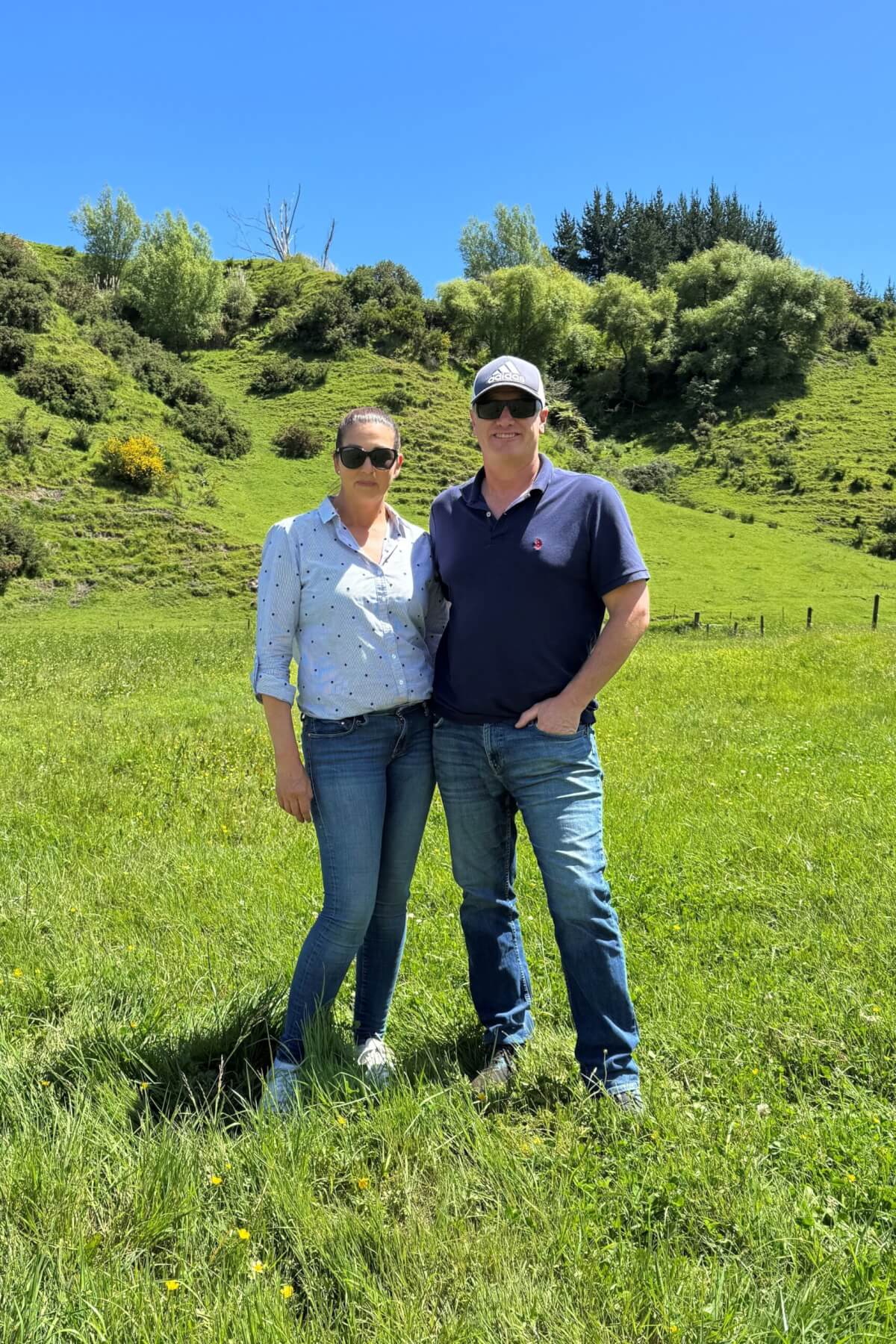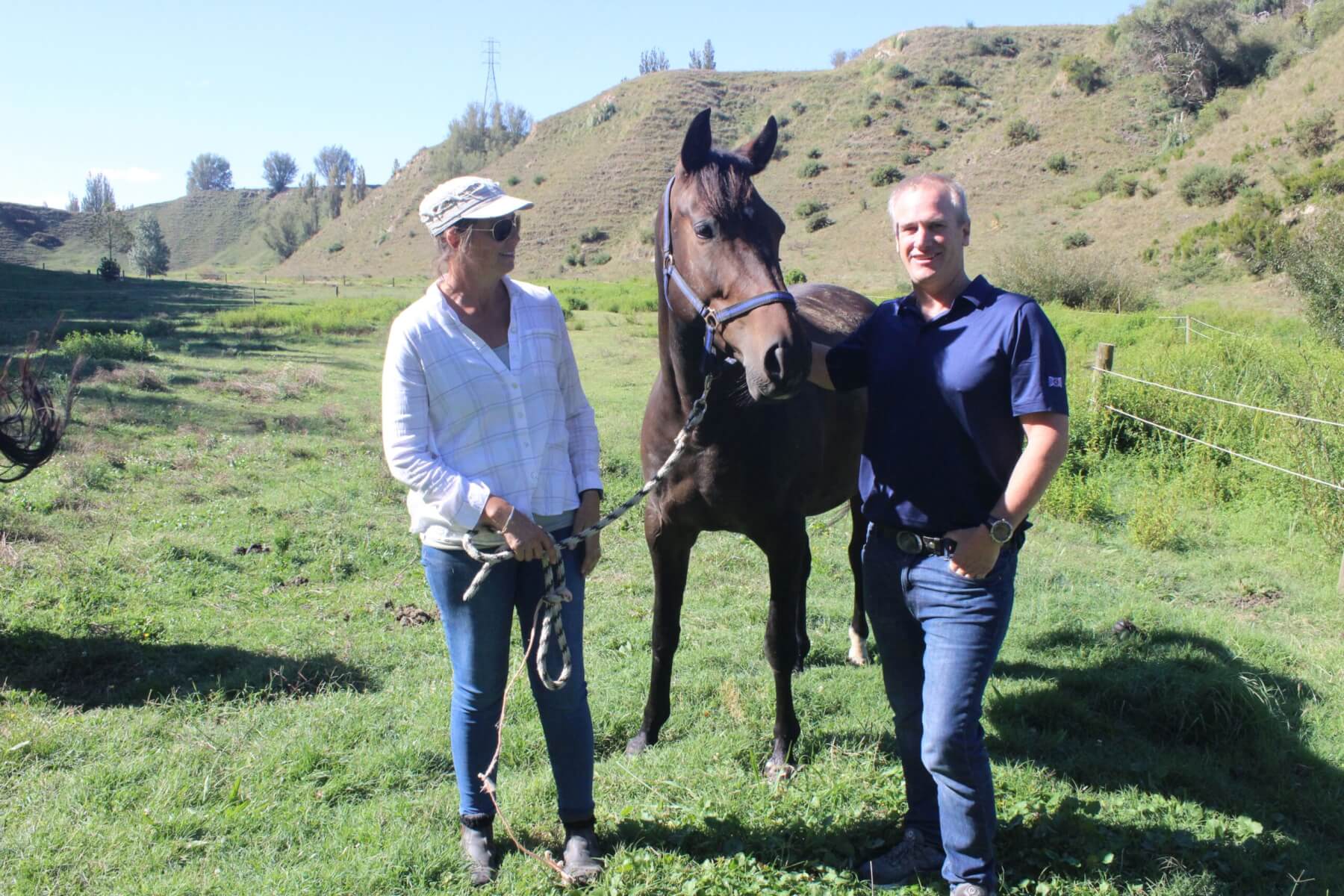
Rhys and Antoinette Powell.
After four years and $130,000 in legal fees, Rhys and Antoinette Powell’s fight against a Cambridge quarry ended last week – not in court, but with a handshake.

Rhys and Antoinette Powell in front of the 32-metre high river bank which will remain under the deal they struck with quarry operators.
On site at French Pass Road, Rhys Powell and Fulton Hogan chief operating officer Simon Dyne agreed to preserve a 32‑metre high riverbank between the couple’s property and the RS Sand quarry at 77 Newcombe Road.
The original application would have seen the bank, along the Karāpiro Gully, reduced at the start of the mining and then removed completely at the end – in about 30 years.

Simon Dyne
The Powells’ southern boundary is only 15m from the quarry. They would have had a ring side seat from their living room to a working quarry operation for all that time.
The deal – which also sees a 3m bund installed on top of the bank – prompted the Powells to drop their Environment Court appeal.
The agreement clears the way for RS Sand – owned by Stevenson Aggregates, a Fulton Hogan subsidiary – to extract 400,000 tonnes of sand annually.
The company had already secured a resource consent with strict and enforceable conditions imposed by both Waikato Regional and Waipā district councils after a Resource Management Act hearing before an independent panel.
The conditions would protect neighbours, local roads and the environment, they said at the time.
The conditions included the establishment of cultural landscape zone to protect native species, a limit of 150 daily truck movements through Cambridge and an annual payment of $17,200 to the Waipā council for road maintenance.
The Powells were the only ones to appeal the decision to the Environment Court. This month they entered mediation already having spent $130,000 on legal bills and expert advice.
“I’d do it again,” Rhys Powell told The News.
“The original application was simply too flawed and unacceptable to let through.
“The lawyers and council would have gone to court. Simon Dyne came down, had a look (at the site) and said, ‘yep I get what you’re saying’ and we shook on it.”

The site at the end of Tīrau Road where proposed on-off ramps would be built. Photo: Mary Anne Gill
The deal did not include compensation to the Powells despite their significant costs.
Rhys Powell said he did the best he could for Cambridge.
“I tried to stop the thing, but I didn’t have the support of council or anyone else financially. No one chipped in any money.”
He is scathing of both the regional and district council who he said had no real-world experience in quarrying or mining operations.
Before establishing his equestrian centre business in French Pass Road, Powell worked in mining for 30 years.
“I was the only party to appeal the decision. I engaged a team of qualified experts and top lawyers and spent well over $130,000, excluding my own time, to develop a substantially revised proposal that properly addressed the impacts on my property and on neighbouring residents.
“The final design now delivers a far better outcome – something the councils should have required from the very beginning.
“While the quarry trucks will never travel past our property, there were only so many battlefronts we could fight on our own,” said Powell.
“My advice to others facing a similar consent process: expect very little from council planning and transport teams, use the latest AI tools to quickly identify flaws, and be prepared to stand up and fix things yourself – because often no one else will.”
Cambridge Chamber of Commerce chief executive Kelly Bouzaid welcomed the decision but said she was still concerned at the amount of heavy traffic which would travel through the town.
As part of the consent conditions, groups like the chamber and the Cambridge Community Board would be tasked with monitoring truck numbers.

Rhys and Antoinette Powell run an international equestrian operation on the northern side of the proposed quarry and rely on the large, natural riverbanks to exercise and condition their horses. Photo: Mary Anne Gill









